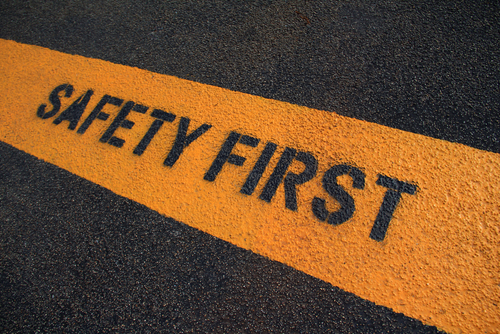Today’s Advisor gives you training information on one of the weekly themes of the National Safety Council’s (NSC) annual National Safety Month (NSM): “Be aware of your surroundings.”
 |
“Safety: It takes all of us” is the overall theme of this year’s NSM, which is held every June. In addition, each week has its own emphasis as follows:
- Week 1: Prevent prescription drug abuse
- Week 2: Stop slips, trips and falls
- Week 3: Be aware of your surroundings
- Week 4: Put an end to distracted driving
- Bonus week: Summer safety
For today’s edition, we’ll focus on Week 3’s emphasis on safety awareness by giving you some training content to use with your employees.
The government has numerous safety programs and regulations that our company follows. The company makes an effort to purchase equipment and design processes that reduce risk and improve safety. The company also provides you with training and protective clothing and equipment, all with the goal of preventing accidents and keeping you safe and healthy.
Great news! BLR’s renowned Safety.BLR.com® website now has even more time-saving features. Take our no-cost site tour! Or better yet, try it at no cost or obligation for a full 2 weeks.
However, all the regulations, training, and equipment in the world can’t protect a worker who doesn’t look out for himself or herself. The sad fact is that most accidents are someone’s fault. They’re the result of carelessness, of someone not paying attention or not thinking safety is important on his or her job.
Most careless accidents can be pinned down to one of these causes:
- Complacency. That’s what happens when someone has done the job so often that he thinks he doesn’t have to think about it. But no job is so simple that it doesn’t require following all the steps and paying attention. When you go on automatic pilot, you crash.
- Emotions. We all get angry or upset at things happening at home, an incident with someone here on the job, or even at some stranger who cut you off on the way to work. These are understandable emotions, but they distract you and make you careless. You just can’t afford these emotions when you’re working with complex machinery, hazardous chemicals, electrical power, and other things that can cause serious accidents if they’re not handled with full precision and attention. You’ve got to learn to push these emotions back when you’re at work; if you let them take over, you’re only likely to create new and more serious things to worry about.
- Tiredness. Whether the cause is too little sleep, too long a shift, or maybe a second job, tiredness is a serious risk on the job. When you’re tired, your physical and mental reactions are slower. You have trouble paying attention, remembering what to do, or actually doing it when and how you’re supposed to. You can’t always prevent getting tired, but you can be aware of it and either slow down, get help, or switch to a task that doesn’t require as much precision. Don’t let too little sleep jeopardize your safety.
- Lack of knowledge. In our training programs, we try to cover all the things you need to know and do to be safe but sometimes it doesn’t all get through. That may be because the training didn’t provide information or procedures in enough detail. Or it may be that there was so much detail you couldn’t take it all in. That, by the way, is one reason we have safety meetings, which are good refresher courses. Sometimes the training is very good, but the trainees don’t pay close attention or take it very seriously. And sometimes people think that having been through training means they’re expected to remember every single thing, so they’re afraid to ask questions.
The bottom line here is simple.
- If you’re not sure what to do, ASK.
- If you’re not sure how to do it, ASK.
- If you’re not sure how it works, ASK.
- Don’t go ahead unless you know what you’re doing, what the risks are, and how to protect yourself.
The company provides you with a lot of safety tools, but the most important safety tools of all are the ones you bring to the job: your attitude and your common sense.
Your one-stop safety management resource, available 24/7. Go here to take a no-cost site tour or here to try it in your own office!
Why It Matters
- Accidents don’t have to happen.
- Interactive training, the proper safety equipment, and effective safety procedures all help to avoid accidents.
- But the biggest way to prevent accidents is for employees to always be in the moment at work, always paying attention, always being aware of the job in front of them and the workspace around them.
